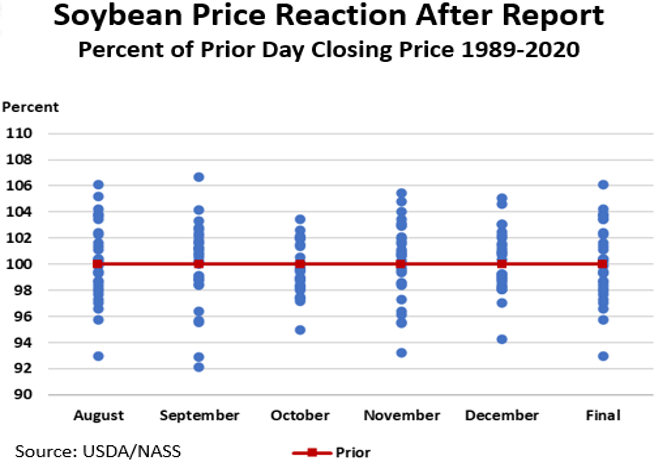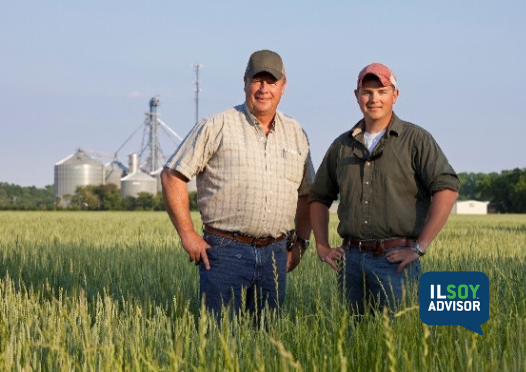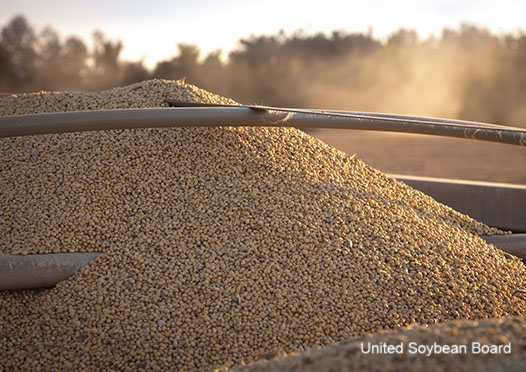ILSOYADVISOR POST
The Importance of Grain Estimates in the Marketplace - Why Are We Showing Our Hand?
At the National Agricultural Statistics Service (NASS) we take pride in providing reports of agricultural commodities to the public in an unbiased manner, at a pre-determined time. With so much riding on agricultural commodities that provide food, feed, and fuel for the United States and other countries, many of our reports are highly anticipated in the marketplace. With respect to this price discovery impact, NASS works hard to ensure that estimates are as accurate as possible and to protect the confidentiality of information until the exact second the data are released to the public. Once a NASS report is released, prices of commodities sometimes rise or fall, depending on what key players in the marketplace are anticipating. The chart below illustrates the impact on soybeans the day after a NASS crop production report, from August through the final production report in January. The red line represents the price of soybeans prior to a report release and each blue dot represents the price a day later, for the last 30 years.

As the chart shows, the instances of prices rising vs. falling are virtually equal. However, public reactions are quite different. When prices rise, there is generally very little concern and very few questions. But when prices fall, many question the transparency USDA is providing to the world, prompting some to ask, “Why are we showing our hand?”
Stephen Censky, Chief Executive Officer of the American Soybean Association (ASA), recently moderated a webinar discussion hosted by the St. Louis Agribusiness Club on the importance of infrastructure for continued competitiveness of the U.S. agriculture industry. He stated that soybean farmers export about 50% of the crop produced in this country. On average, he said soybeans travel for the first 15 miles on roads and bridges in order to get to an export elevator, and then they are transported by rail or by barge on the inland waterways and then on to various ports and harbors, underscoring the importance of the entire transportation network for the movement of this single ag product.
One thing the COVID pandemic has shown us is how easily supply chains can be disrupted. Walking through grocery stores in the spring of 2020 and seeing shelves void of canned goods and limited fresh meat options, was something most of us have never seen in our lifetime. Now that things are picking back up, we’re seeing other shortages of workers, supplies, and products. Ships are lined up and waiting weeks to unload at ports. Trucking companies and railroads are struggling to keep pace with the transportation needs in and around the country. Our logistical and infrastructure capabilities have not been stressed like this, arguably since World War II. Experiencing these challenges reminds us how important it is to have sufficient, accurate information about agricultural commodities entering the supply chain.
For grain buyers it is important to know what is coming, so they can make the logistical plans and decisions to transport billions of bushels of grain each year. The anticipated level of production can determine the necessary storage capacity, as well as, how many trucks, rail cars, and barges will be needed to transport the grain to its’ destination. For both farmers and grain buyers, it is important to know what price they can expect to receive or pay at the point of sale. Knowing what to plug into balance sheets sooner, rather than later, is an important component for any successful business. Even if prices aren’t what the respective buyer or seller would like them to be, knowing in advance for planning purposes, can be critically important to the success of the operation.
For these reasons the NASS mission of providing timely, accurate, and useful statistics in service to U.S. agriculture is as important as ever. Satellite technology and administrative data are great sources used to supplement the NASS estimation program, but no one knows more about producing agricultural commodities than the farmers themselves. If you are a farmer and you get a questionnaire in the mail, a phone call, or personal visit asking about your operation, please help us make our estimates the best they can be. Everyone deserves a fair shake in the marketplace, especially the hard-working people who produce our nation’s food.





Comments
Add new comment